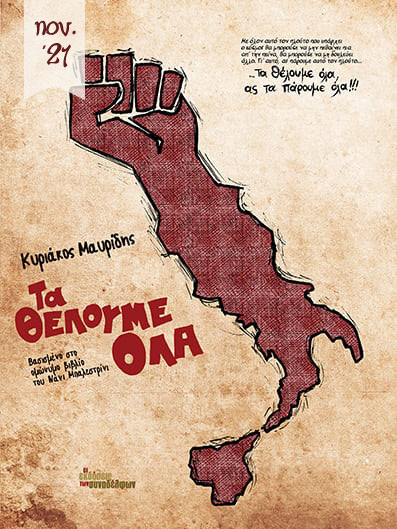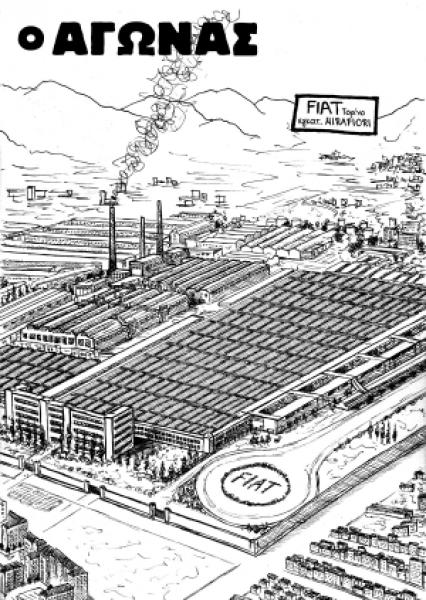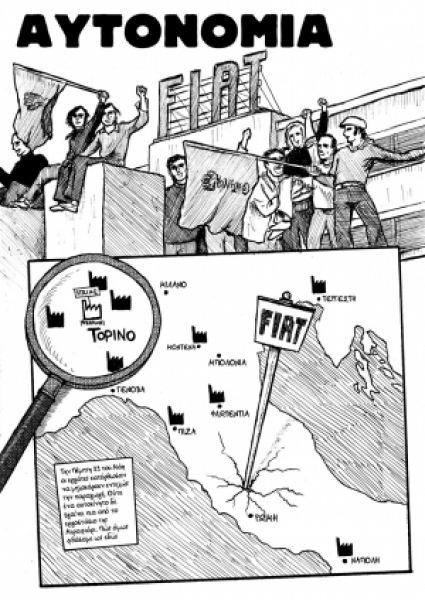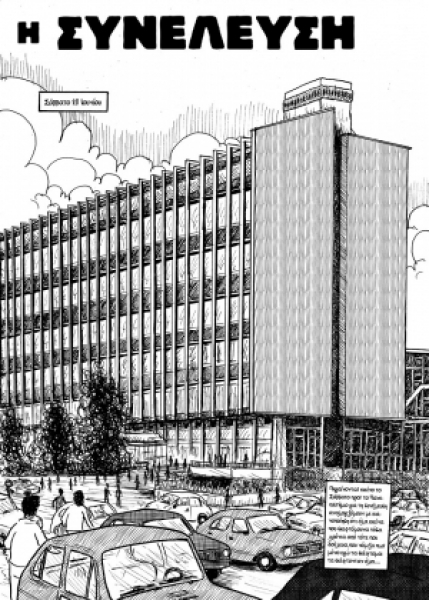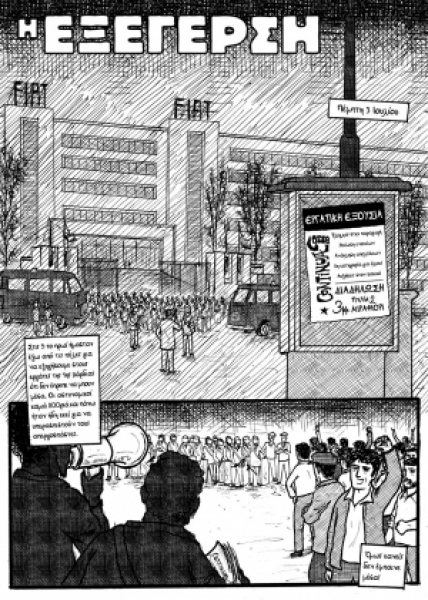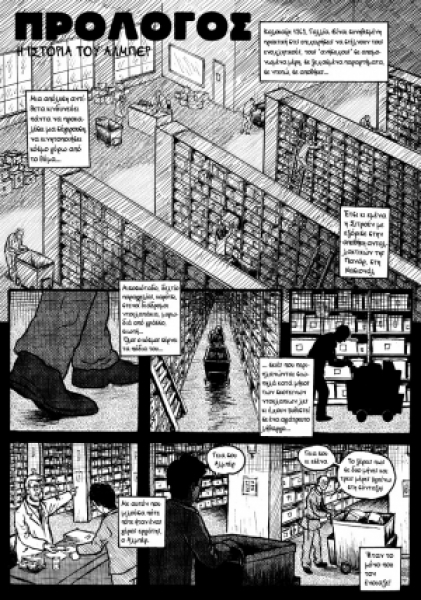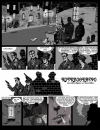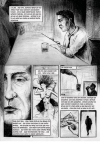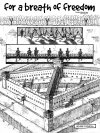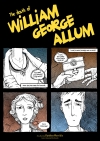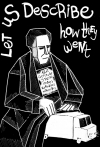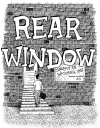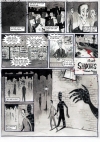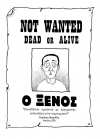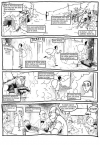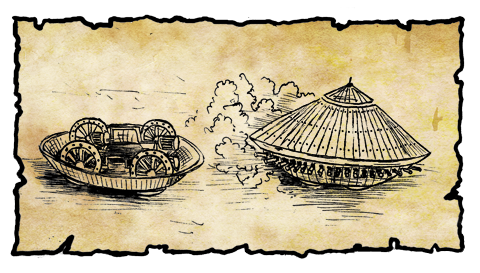
"My Lord,
you ask for my sketches as a friend
but you will use them
as a King"
from my new comic "Leonardo: The dream and the Nightmare" (temporary title)
Displaying items by tag: blacknwhite
Another quite old story, with 8 pages this time. It's a noir fairy tale about a forbidden love between two young people, that in the first 6 pages goes backwards in the motif of films like Memento, Irreversible etc (you can see the differences in the pages' background that indicate this change).
I used Photoshop for coloring and lettering. All texts are in greek.
This is the oldest comic in this site. It's an almost 60 pages story that I started drawing the long hours of boredom during my (compulsory) service in the army (2005). The drawing style is very realistic and the colors are mostly black and white (with shades of grey -some of them added digitally) with few exceptions.
The storyline goes pretty much like this: A detective discovers a dead woman's body on his bed. Trying to find out what has happened and who that girl is he ends up in a bar called Blue Angel. There he discovers that this girl is called Nelly and has the dangerous 'habbit' of faking her own death mainly for revenge, betraying the men that loved her. The detective tries to exit the bar unsuccesfully and Nelly appears to end violently the story.
My initial thought was this to be a series of semi-autonomous stories with a noir character, where Nelly, the detective and other figures of the story would engage in different plots. This one would be the last, closing the series (thus the name 'epilogue') despite the fact that it would be published first. In fact, the order of the published stories would be mixed and each issue would contribute to the whole puzzle.
I abandoned the project for many reasons, such as lack of time and a small disappointment of the overall result of Epilogue (which has many drawing and narrative flaws).
You can download the comic in pdf format: 1st, 2nd part and 3rd part.
The "for a breath of freedom" was initially written in the autumn of 2014, during hunger strike of N. Romanos and was completed about a year later (early October 2015). It is evident that the struggle of Romanos, alongside with the prisoners’ hunger strike in the spring of ‘15 played a key role in how the story unfolded. One of the main influences (perhaps the most important one) for the comic was a brochure entitled "Mapping the specific conditions of detention" (from the collective discourse and action project "Perasma", in Patras) on the special conditions of detention. Some of them are complete isolation, white cells with 24-hour light and electronic monitoring, taken to courtyard alone, censorship and the overall restriction of communication with the outside world, the psychological pressure, violence, vaginal checks and depreciation / rape of detainees' body.
The conditions described in the comic (and based on a summary of the brochure) do not exactly describe the current greek reality -especially after the prisoners’ struggle during last spring. But outline the nightmarish direction that gets the increasing criminalization and control of our lives. The initial emotional shock reading the brochure was succeeded by rage and the pursuit for denunciation -but even more for resistance, support and solidarity with the struggles of prisoners.
Other sources and influences were the books "Political prisoner and Special Conditions of Imprisonment" by the Trans-Siberian editions, the " LES PRISONS DE LA MISERE " of WACQUANT JD LOIC, the "Run, People, Run" of GONZALLES XOSE-TARRIO, the brochure " La société punitive" by M. Foucault, the film "Tacit Death: A smothered cry from the cells of isolation," the comics by Joe Sacco but also the Don Quixote.
UPDATE 2016: The comic was published by the publication project Asymmetric Threat.
This comic was inspired by the poems of a greek poet Nikos Kavvadias, and especially the two poems called "William George Allum" and "Marabu". Unfortunately i haven't found any english translations of these two poems (you can find some other translations in this link). I will try and give a short description of the two poems:
William George Allum: The poem starts with our narrator saying that he had met a very strange English stoker. Everybody was telling him that this stoker had a very painful story. He had tattoos on all over his body, and especially on top of his heart a very beautiful and wild woman. She was the love of his life but she betrayed him with another sailor and so he tried to forget everything about her. But on his chest remained the painting of her. Many sailors had seen him during the night rubbing his chest so as to erase her tattoo -in vain. Some night near Bay of Biskay, they found him dead with a knife in his heart. The captain said he tried to erase his stigma (painting, tattoo) and ordered to bury him in the sea.
Marabu: In this poem the narrator tells us that there are stories about him, that he is a lousy punk, that he never sleeps with women, that he takes drugs and has tattoos on all over his body. But (he tells us) his true story is different: in one of his trips, when he was young, he had met a girl, the daughter of a wealthy Egyptian, who had killed himself. She traveled around the world to forget her sorrow. Our narrator and this girl became friends and loved each other deeply. When they had to leave each other they exchanged presents (he gave her a small cross, and she gave him a large wallet) and he was the most depressed man on earth. He never forgot her as he had her photo as his guardian angel. One night on a foreign port he got very drunk and followed a prostitute to her place. Next morning when he tried to pay her she screamed staring at his wallet. He saw the cross on her neck. It was her. She left her place like a madman and never got over it.
The comic is published by the publishing company Kapsimi (ΚΨΜ) and in case you are interested in it you could order it here.
This is a short story for two serial killers wandering around the city of Athens. It was a story i sent to the 9th competition of the comic magazine "9" (summer 2009). The story was given a certificate of distinction and was exhibited with all the other awards.
The texts are in greek. I used watercolors for the initial coloring and edited the result (for some final touches) in Photoshop.
This is a 4pages story for a guy trying to find out what has happened to a "Stranger" that went missing. I sent this story to the competition "Strangers in the same city"of the newspaper "To Pontiki" (spring 2010). The story (along with the story The Train) was given a certificate of distinction and was exhibited with all the other awards.
The texts are in greek.
"The Stranger" was exhibited at the Antifascist Festival in Syros, 7-11 June 2012.
Underneath the gallery of this comic's pictures I have added an online collection of some of my short comics, including: Rear Window, The Train, The Stranger, Let Us Describe, Dreamcatcher I and II, and Once Upon a Time.
This is a 4pages story for a guy leaving his country and embarking on a strange train. I sent this story to the competition "Strangers in the same city"of the newspaper "To Pontiki" (spring 2010). The story (along with the story The Stranger) was given a certificate of distinction and was exhibited with all the other awards.
The texts are in greek.
"The Train" was exhibited at the Antifascist Festival in Syros, 7-11 June 2012.
Underneath the gallery of this comic's pictures I have added an online collection of some of my short comics, including: Rear Window, The Train, The Stranger, Let Us Describe, Dreamcatcher I and II, and Once Upon a Time.
.
Now in Bookstores
We Want Everything
the publications of colleagues, Nov. 2021
Summer of 1969, Italy. A year after May '68, FIAT workers began a dynamic and unmediated strike against their powerful boss. Their struggle marked the beginning of a decade of workers' and students' mobilizations and the rise of the Autonomy movement. It was characterized by many as the last invasion of the working class into the sky. Last ... let's hope until the next one ...
